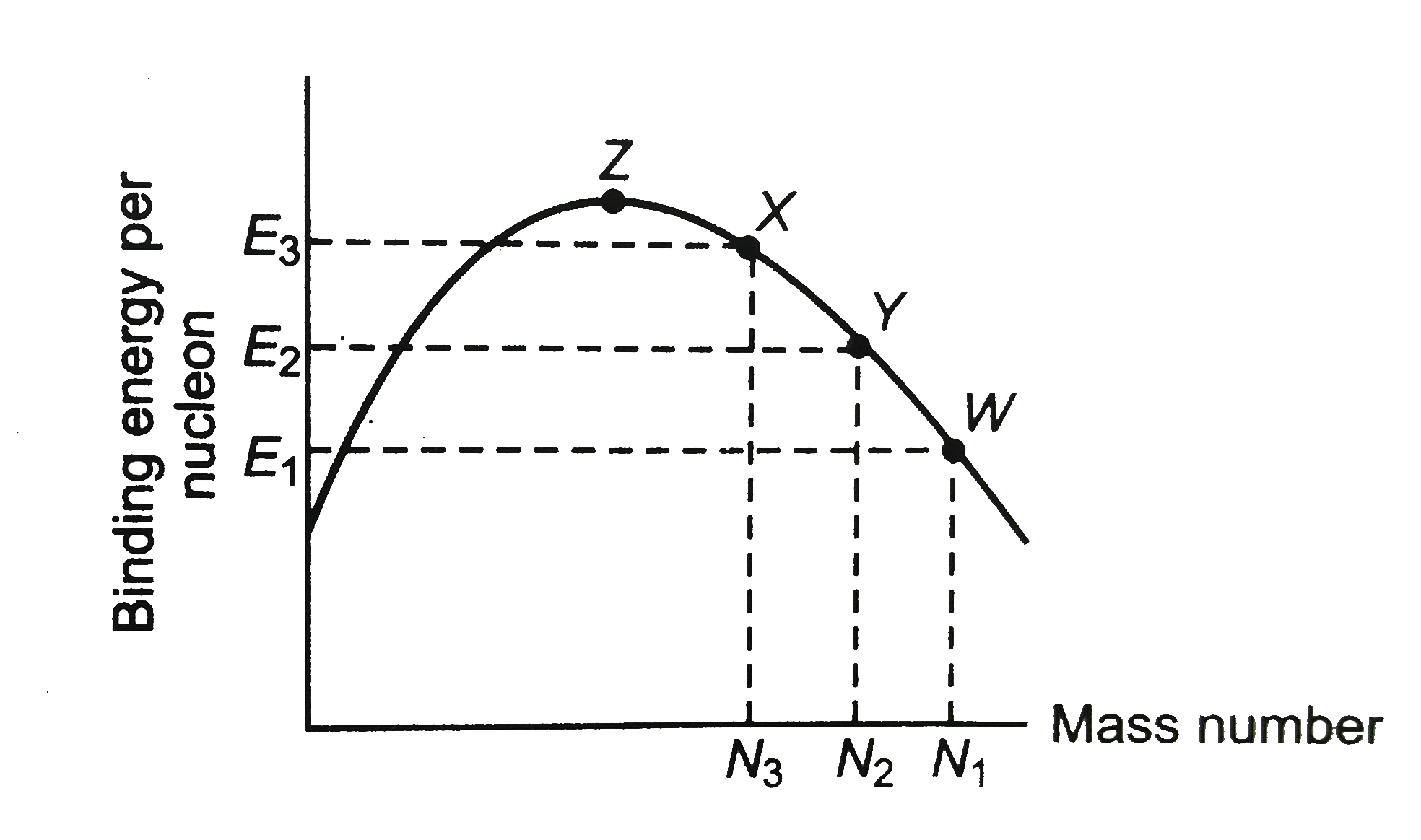What is a nuclear fission reaction ?
Step-by-Step Solution:
1. Definition of Nuclear Fission:
- Nuclear fission is a nuclear reaction in which a heavy nucleus splits into two smaller nuclei of comparable mass. This process releases a significant amount of energy.
2. Example of Nuclear Fission:
- A common example of nuclear fission is the reaction involving Uranium-235 (U-235), which has an atomic number of 92.
3. Initiation of the Reaction:
- The fission process is initiated when a neutron collides with the U-235 nucleus. This neutron can be thought of as a catalyst that triggers the fission reaction.
4. Products of the Reaction:
- Upon absorbing the neutron, the U-235 nucleus becomes unstable and splits into two smaller nuclei. In this case, the products are Barium (Ba) with a mass number of 141 and Krypton (Kr) with a mass number of 92.
5. Additional Emissions:
- Along with the formation of these smaller nuclei, the fission reaction also releases three additional neutrons. This is significant because these neutrons can go on to initiate further fission reactions, leading to a chain reaction.
6. Energy Release:
- The fission of U-235 releases a large amount of energy, estimated to be around 200 mega electron volts (MeV). This energy is harnessed in various applications, particularly in nuclear power plants.
7. Utilization of Energy:
- In nuclear thermal power plants, the energy released from fission is used to heat water, converting it to steam. The steam then drives turbines connected to generators, producing electricity.
- Nuclear fission is a nuclear reaction in which a heavy nucleus splits into two smaller nuclei of comparable mass. This process releases a significant amount of energy.
- A common example of nuclear fission is the reaction involving Uranium-235 (U-235), which has an atomic number of 92.
- The fission process is initiated when a neutron collides with the U-235 nucleus. This neutron can be thought of as a catalyst that triggers the fission reaction.
- Upon absorbing the neutron, the U-235 nucleus becomes unstable and splits into two smaller nuclei. In this case, the products are Barium (Ba) with a mass number of 141 and Krypton (Kr) with a mass number of 92.
- Along with the formation of these smaller nuclei, the fission reaction also releases three additional neutrons. This is significant because these neutrons can go on to initiate further fission reactions, leading to a chain reaction.
- The fission of U-235 releases a large amount of energy, estimated to be around 200 mega electron volts (MeV). This energy is harnessed in various applications, particularly in nuclear power plants.
- In nuclear thermal power plants, the energy released from fission is used to heat water, converting it to steam. The steam then drives turbines connected to generators, producing electricity.
Topper's Solved these Questions
- BOOK - CENGAGE CHEMISTRY ENGLISHCHAPTER - NCERT BASED EXERCISEEXERCISE - Surface Chemistry (In-Text Question)8videos
NCERT BASED EXERCISE
- BOOK - CENGAGE CHEMISTRY ENGLISHCHAPTER - GRIGNARD REAGENTS AND ORGANOMETALLIC REAGENTSEXERCISE - Exercises Archives (Linked Comprehension)1videos
GRIGNARD REAGENTS AND ORGANOMETALLIC REAGENTS
- BOOK - CENGAGE CHEMISTRY ENGLISHCHAPTER - NUCLEAR CHEMISTRYEXERCISE - Archives Subjective13videos
NUCLEAR CHEMISTRY
Similar Questions
Knowledge Check
- Question 1 - Select One
Which of the following equations, pick out the possible nuclear fusion reactions?
A.136C+.11H→.146C +4.3 MeVB.126C+.11H→.137N + 2 MeVC.147N+.11H→.158O + 7.3 MeVD.23592U+.10N→.14054Xe+.9438Sr+.10n+.10n + 200 MeV
In our nature, where is the nuclear fusion reaction taking place continuously?
View SolutionDuring a nuclear fusion reaction,
View SolutionConsider the nuclear fission reaction W→X+Y. What is the Q-value (energy released) of the reaction?
 View Solution
View SolutionWhat is multiple fission?
View SolutionWhat is nuclear fission ? Name the particle used for it. Write one fission reaction.
View SolutionDefine nuclear fission.
View Solution(a) What is nuclear fusion ? Give one example and write its nuclear reaction.
(b) What other name is given to nuclear fusion ? Give reason.View Solution

